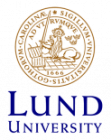URINITE – Stabilisation of urine by nitrification
The urine separation systems of the future will include volume reduction to further decrease transport and storage needs and to obtain a more concentrated fertiliser. Stabilisation of the urine is required to not lose the nitrogen through ammonia volatilization during the volume reduction treatment. Nitrification is a promising method for stabilising urine.
Experiences of urine nitrification without alkalinity addition are very few and only a few research groups have studied the process. In the urine separation system of the future no flushwater is collected with the urine, and the experiences on very concentrated urine are even less.
We are running lab reactors on urine nitrification together with the Department of Chemical Engineering at Lund University. We are working with moving bed biofilm reactor (MBBR) systems. The studies includes start-up procedures and operation strategies (DO and pH levels) with collected human urine with a nitrogen concentration of approximately 10,000 mg/L. We are also studying dynamics of nitrous oxide production in the reactors.
URINITE is a part of the larger project called URILAB. Sege Park is an old hospital area in the city of Malmö that will refurbished into apartments and several new multi-storey apartment houses will be built. The vision for Sege Park is that it will be Malmö´s new showcase for sustainable development and an experimental workshop for sustainability. For example, one aim is that at least one apartment house should install a urine separation system and a test bed facility for urine treatment should be built. The project to realise the installation of the urine separation system and to operate the test bed is called URILAB.


